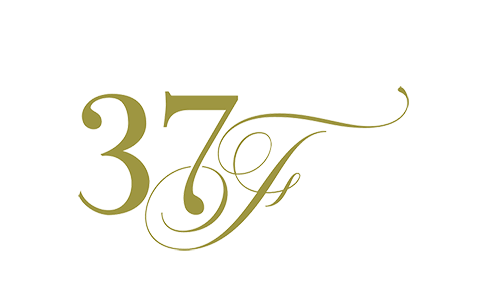Today, we lost a giant.
Not someone whose stature needed amplification, but someone whose life announced itself by the quiet magnitude of her choices.
Dr. Jane Goodall, 91 years, countless lives touched, forests and creatures defended, has passed on.
We are sad. But we are also in awe. Because in a world that often tells women to shrink, she grew wide. She grew fierce. She grew gentle. She became voice for the voiceless, witness in the wild, and guardian of our planet’s fragile stories.

The Small Work That Changes Everything
It started with a chimpanzee.
Just one. In the forests of Gombe, Tanzania. She watched. She listened. She saw relationships, personalities, tool use … things no one expected. And those observations reshaped how humanity sees itself.
To many, that’s a small thing. But under Goodall’s eyes, small things multiplied. Compassion, patience, trust. Slowly, insistently. Into movements. Into governments. Into the hearts of children. Into global change.
Because sometimes change doesn’t blast in. It seeps in. It roots quietly. And often, it begins in what seems like the smallest act: naming, studying, caring.
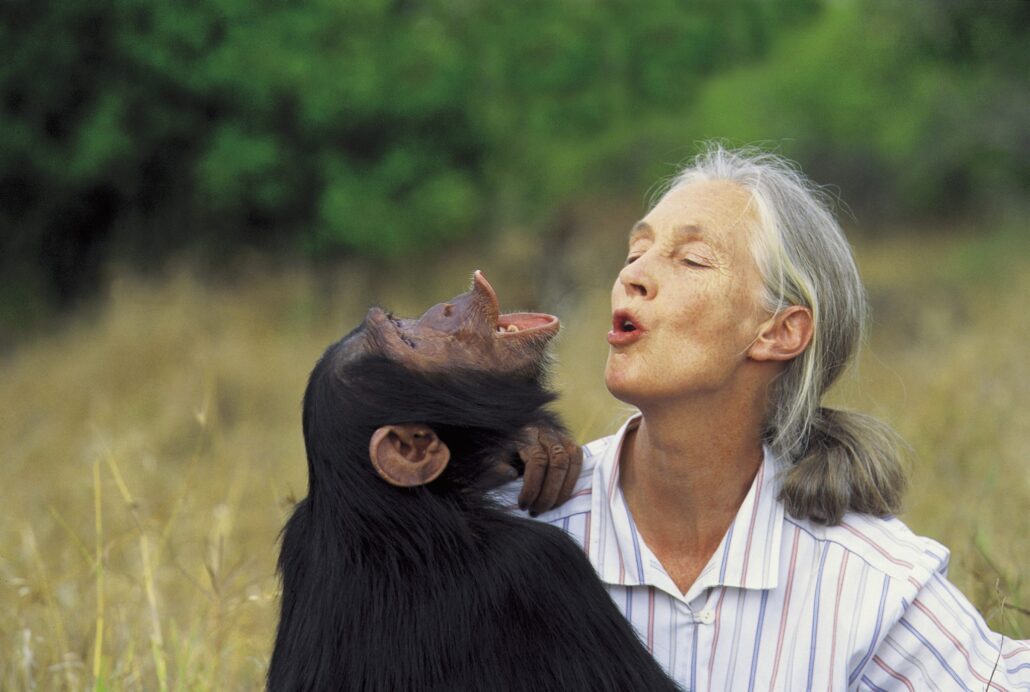
Women Who Change the World
She joins a lineage: those who changed the course of history not by shouting louder than others, but by listening more deeply than most dared.
Women whose ideas were dismissed. Whose silence was mistaken for weakness. Who were told their questions were too “soft,” their vision too big for the detail-bound world. But who persisted anyway.
Jane Goodall taught that to change the world, you don’t always need a loud megaphone. You need courage. You need persistence. You need the humility to admit you still have so much to learn.
A Legend Who Could Laugh
One of my favorite Jane Goodall stories has nothing to do with scientific breakthroughs or standing ovations at the UN. It has to do with The Far Side.
In 1987, cartoonist Gary Larson published a strip where two chimps grooming each other remark on “that Jane Goodall tramp.” Cue outrage. A Goodall Institute colleague fired off letters calling the cartoon “offensive” and “inexcusable.” But Jane? She thought it was hilarious. “Wow. Real fame at last. Fancy being in a Gary Larson cartoon.”
Not only did she defend Larson, but a year later, he and his wife visited her in Gombe. Larson famously had a run-in with a particularly aggressive chimp named Frodo (as Jane later wrote with her wry humor, “Frodo didn’t quite share my enthusiasm for cartoonists”). Eventually, Jane even wrote the foreword to one of The Far Side anthologies in 1995, forever cementing their unlikely friendship.
That’s the thing about Jane Goodall. She wasn’t just a giant in science or conservation. She was someone who could laugh at herself. She understood that humor has a way of disarming fear and opening doors. The very same way kindness and curiosity do.
Legend.
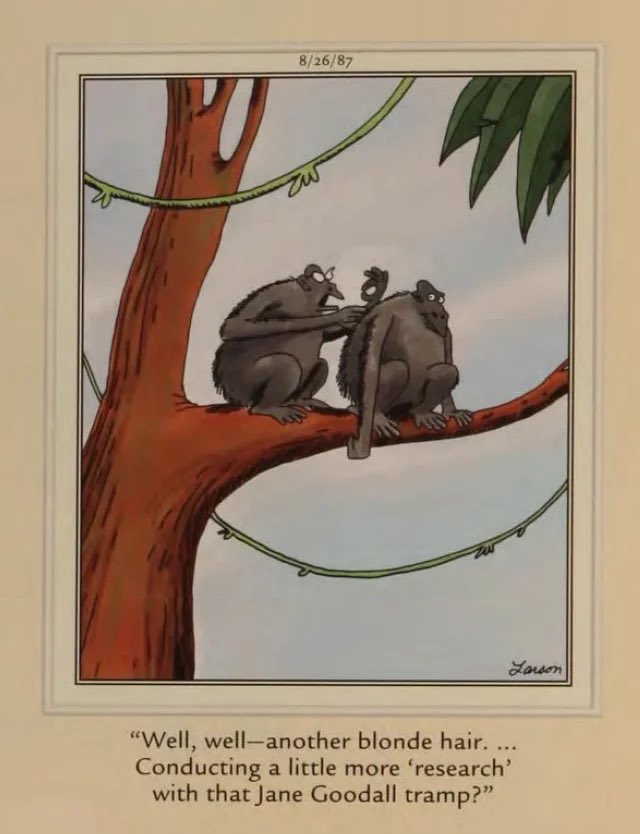
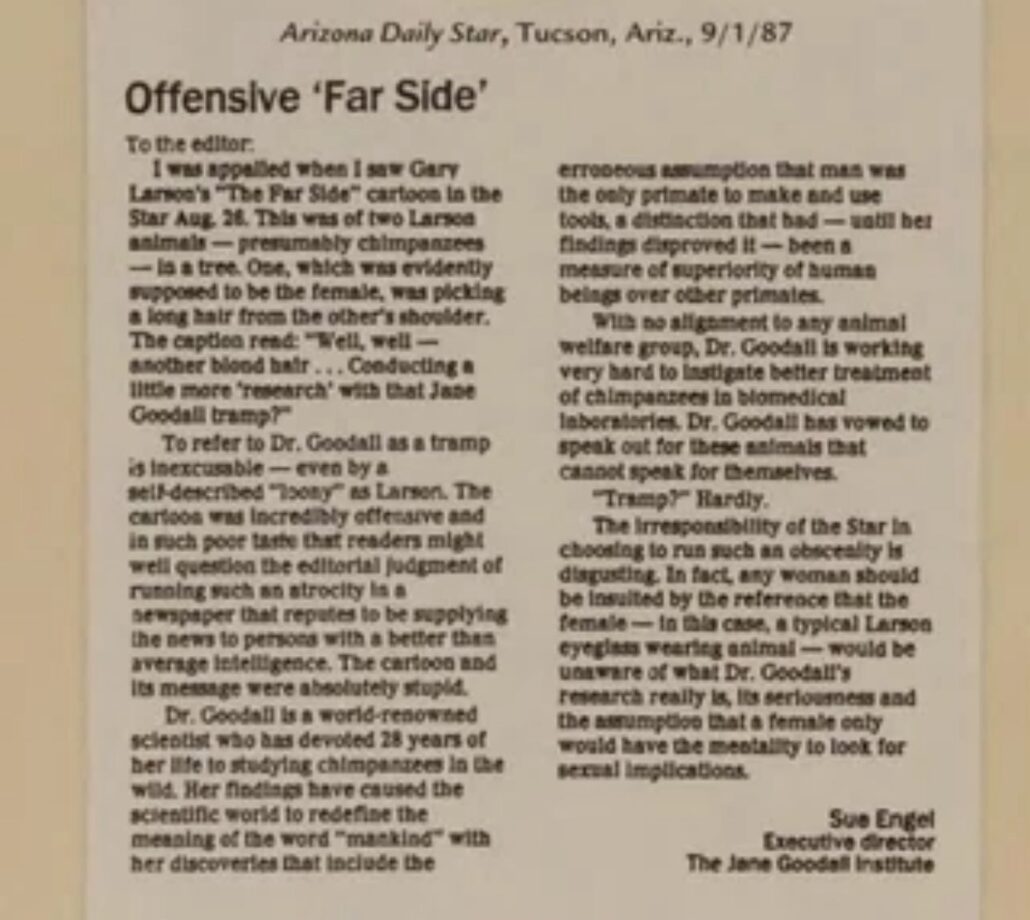
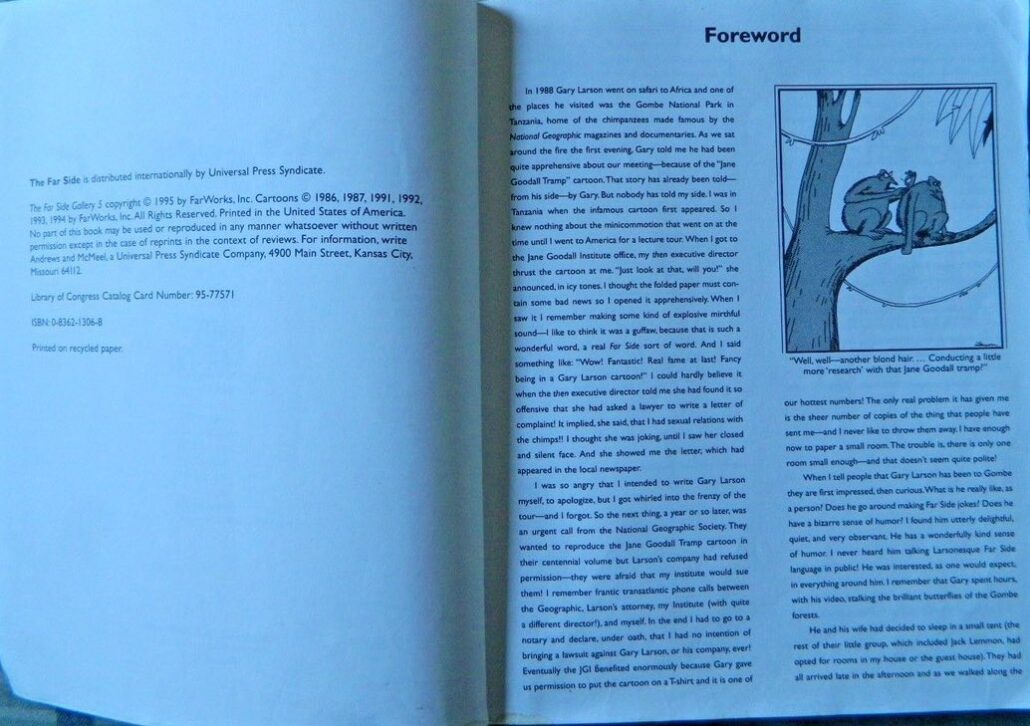
Our Journey Through Africa
When we traveled through Africa, it wasn’t just landscapes that moved us. It was the silence. The kind that hums with life if you listen long enough. It was the presence of animals who owe us nothing, yet whose survival is tethered to our choices.
Standing there, camera in hand, there were often passing thoughts of Jane Goodall. Of the way she sat quietly, patiently, watching. Not trying to bend the world to her will, but allowing it to reveal itself. That lesson reshaped us. And we totally understood how she fell in love with that land. Those animals.
Weddings may be our daily canvas, but travel reminds us of the bigger story. That the way we move through the world matters. That memory-making isn’t only about couples and families. It’s about the earth itself.
Africa reminded us that stories aren’t always ours to tell. Sometimes, they’re ours to protect.
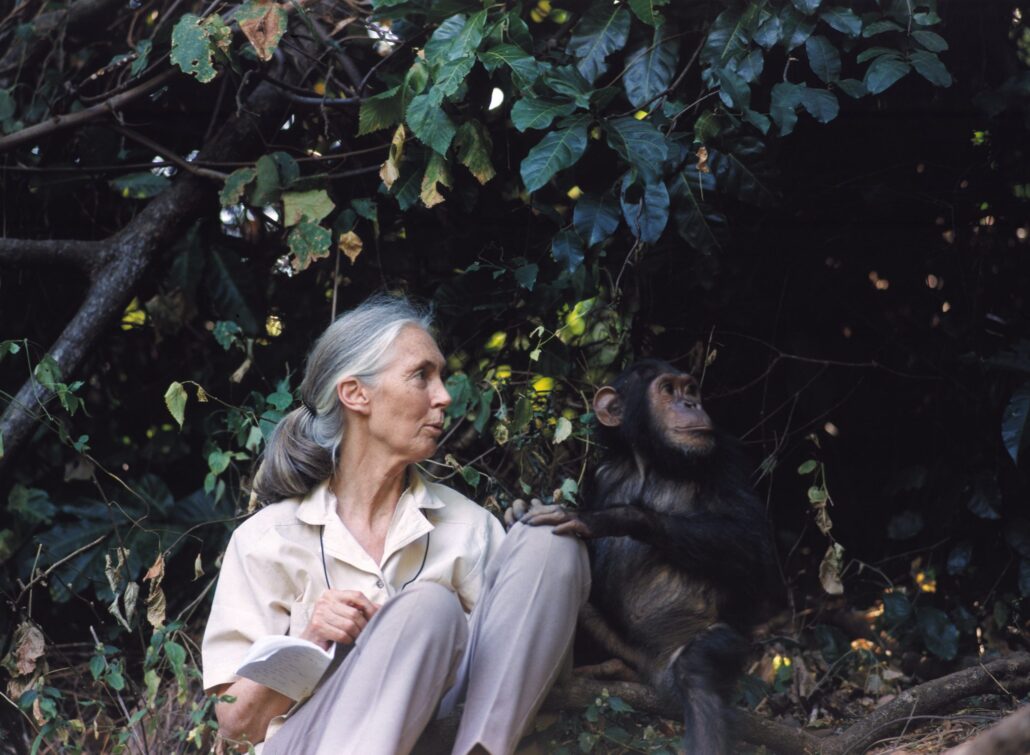
Guardians, Not Just Storytellers
We often say: “We are memory-keepers.” But Goodall expands that. She says: we must be guardians. Of more than memory. Of life.
Because stories do not exist in a vacuum. They ride on the currents of land, water, species, climate, cultures. And those currents are under threat.
She taught us that every species, every forest, every river, has a story. And that humans… as narrators, as creators … have a duty. Not just to tell what we see, but to protect the storytellers: the earth, the wild, the beings whose voices are fragile.
Her Legacy: Roots & Shoots, Hope & Action
She didn’t stop with research. She built institutions.
The Jane Goodall Institute.
Roots & Shoots: a movement to empower youth to act … not later. Now. For people, animals, and the environment.
Her final messages, delivered with resilient hope, urged us to remember our power as individuals. To choose kindness. To see the connections. To act.
She believed deeply in the ripple effect. From one child planting a tree, to one person refusing to be silent, to many hearts raising their voices for life.
What We Owe Her … and the Planet
In this quiet grief, there is a call. A call to carry on what she believed in, in some way.
Let us:
- Always care for the places we photograph.
- Listen to ecosystems as closely as we listen to vows.
- Encourage couples to offset travel impact.
- Teach children to love the world and all that’s in it.
- Stand against apathy, denial, despair.
We owe her stewardship, not just applause.
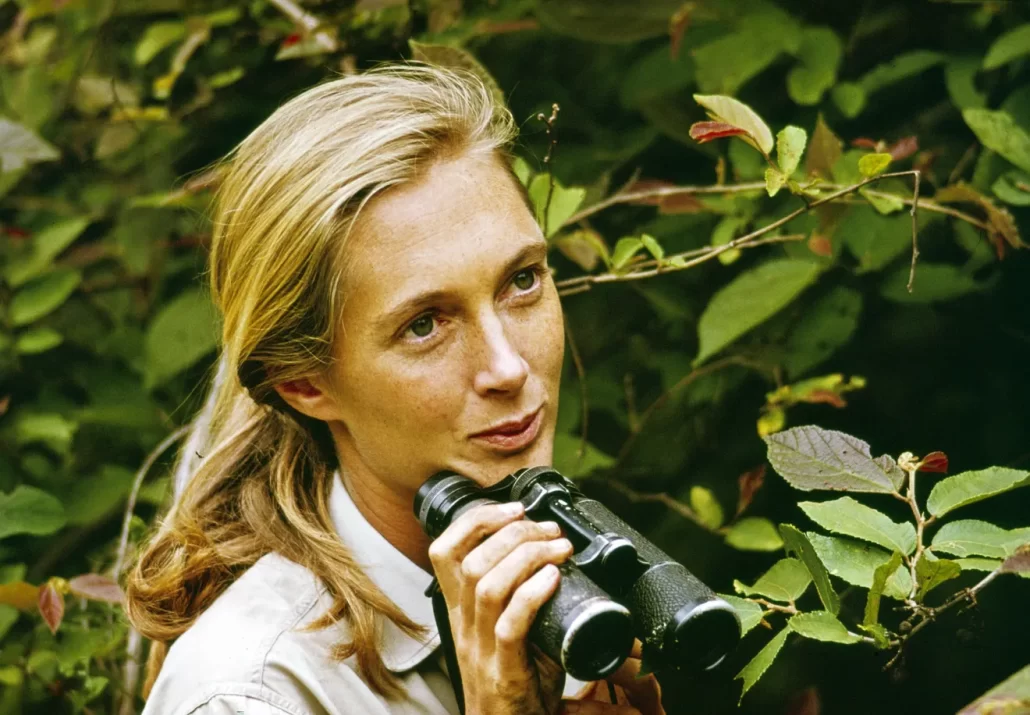
Final Reflection
We believe in ceremonies. In love. In memory preserved. But today we also celebrate guardianship.
Jane Goodall’s life showed us that women change the world not always by grand proclamations, but by seeing what others miss, listening where others don’t, and caring where others won’t.
She watched chimps. She named them. She saw their grief and their joy. She held both in her gaze. And from that act, she helped us see ourselves more honestly.
Rest now, Dr. Jane.
We will carry your questions, your spirit, your urgency forward.
Because stories are precious. And the world, forever fragile, deserves guardians like you.
📋 With love, from those who tell stories

